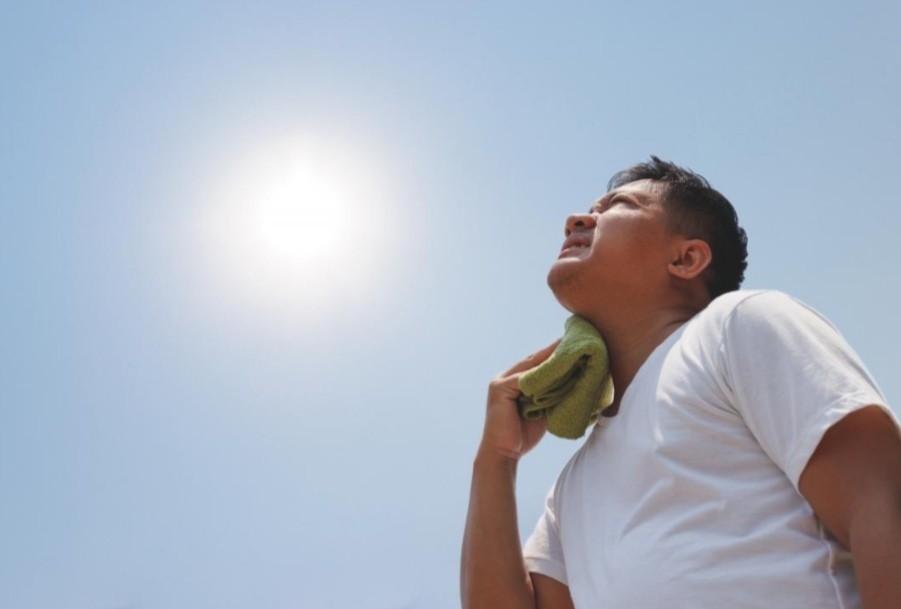Published - Tue, 04 Oct 2022

Minor heat illness
Most cases of minor heat illness occur within the first several days of exposure to a hot environment.
CLINICAL FEATURES
1. Heat cramps are brief, often severe muscular cramps that typically affect muscles heavily used by workers or athletes who are sweating profusely in hot environments. The cramps usually occur after the activity has ceased, while the person is relaxing, possibly resulting from salt deficiency (after sweating).
2. Heat syncope is related to the vasodilation that occurs in people (particularly the elderly) exposed to hot conditions. The dilatation of cutaneous arteries causes a drop in cardiac output, relative hypovolemia of the thoracic blood vessels, a reduction in central venous return, and a reduction in brain perfusion. The dehydrated person is at high risk for syncope.
DIFFERENTIAL DIAGNOSES
In cases of heat edema, it's important to rule out congestive heart failure, deep vein thrombosis, and lymphedema. Other significant causes of syncope should be ruled out because it might have a wide range of causes.
EVALUATION
1. An accurate history should be obtained, including the length of exposure to heat, type of work or activity, intake of water or food, salt intake, and events surrounding the onset of symptoms.
2. Studies: In patients with severe heat cramps or syncope, analysis of serum electrolytes and a CBC may be required to guide therapy. ECG may be important as well in cases of injury.
THERAPY
1. Heat cramps are treated with rest and replacement of the deficient salt with an oral salt solution or may require intravenous isotonic saline (0.9% sodium chloride). Most patients respond rapidly to treatment.
2. Heat syncope usually resolves when the person faints and assumes a supine position. Intravenous rehydration is frequently recommended because the patient may be dehydrated. People who are susceptible to heat syncope should be advised to take preventative steps like moving around regularly, flexing their legs when standing, and sitting or lying down anytime they experience early symptoms (e.g., vertigo, nausea, weakness) appear.
DISPOSITION
Minor heat diseases are easily treated, and most are prevented by patient education and providing proper fluid and salt replacement.
Created by
Comments (0)
Search
Popular categories
Latest blogs

All you need to know about Syphilis
Tue, 15 Nov 2022

What is Pemphigus Vulgaris?
Tue, 15 Nov 2022

Know about Scorpion Stings
Sat, 12 Nov 2022

Write a public review